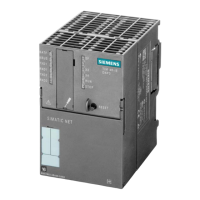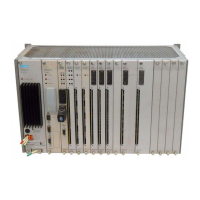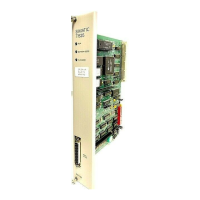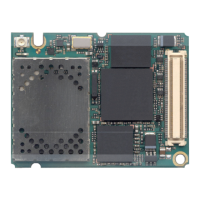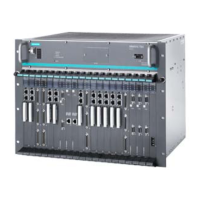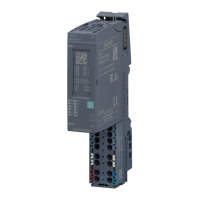Diagnostics and upkeep
7.3 SINAUT diagnostics and service tool
TIM DNP3
System Manual, 06/2014, C79000-G8976-C253-03
251
1. Select a subscriber by clicking on it in the
SINAUT subscriber list
of the open project or in
Accessible Nodes
.
2. Open the
CPU Messages
dialog by selecting the
STEP 7 Diagnostics / CPU Messages
menu.
3. To register the PG/PC for the
CPU Messages
function, select the module in the
W
column
of the module list at the top of the dialog. After the registration, the connection
option (check box) of the module is selected in the
W column
. All the generated
diagnostic messages of the module are then displayed in chronological order in the
Archive
tab of the message list at the bottom of the dialog.
If no connection can be established to the subscriber, a symbol is displayed in the first
column of the module list indicating that the connection is interrupted.
4. Click on the relevant field for the module in the
W column
of the module list again to
deactivate archiving of the diagnostic messages.
5. Select the menu or the button of the dialog to change the settings.
6. Close the
CPU Messages
dialog by clicking on the
close dialog
button (x) in the title bar
or double-clicking on the dialog name in the title bar of the dialog.
Closing the dialog deactivates the
CPU Messages
function.
Module information
Description of the functions
The
module information
function reads diagnostic data from the module of the connected
station. The diagnostic data is displayed for the specific module in a series of tabs:
●
General
tab
List of hardware and firmware components with their versions and information on the
status of the CPU module
●
Diagnostic Buffer
tab
List of diagnostic messages
●
Memory
tab
Information on the utilization of the load and work memory.
●
Time System
tab
Information on the data, time, time system and time synchronization as well as on the
operating hours counter of CPU modules
●
Performance Data
tab
Lists of the organization blocks, system blocks and address ranges
●
Communication
tab
Information on transmission speeds, connection resources and cycle load caused by a
communication
Further tabs are displayed for CPU modules:

